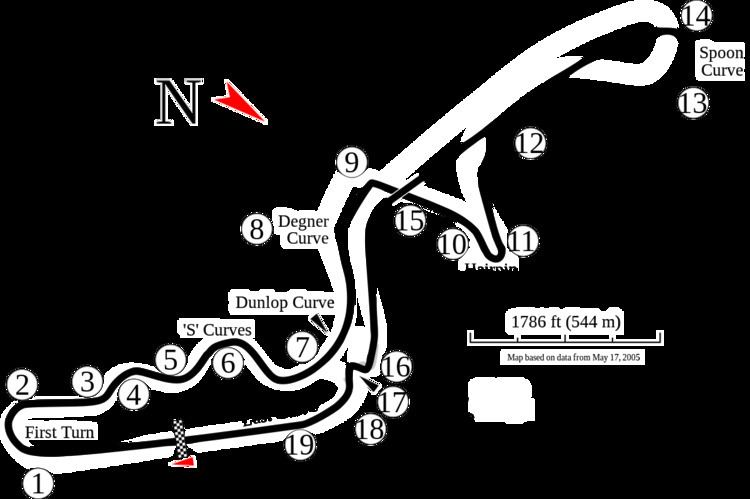Date 20 October 1991 | Course length 5.864 km (3.644 mi) | |
 | ||
Course Permanent racing facility Distance 53 laps, 310.792 km (193.117 mi) | ||
The 1991 Japanese Grand Prix (formally the XVII Fuji Television Japanese Grand Prix) was a Formula One motor race held at Suzuka on 20 October 1991. It was the fifteenth round of the 1991 Formula One season. The 53-lap race was won by McLaren driver Gerhard Berger after he started from pole position. His teammate Ayrton Senna finished second and Riccardo Patrese was third for the Williams team.
Contents
Report
Formula One moved to Japan with the fight for the title still open; this was the fifth year in a row that the title would be decided at the Suzuka circuit. The organizers were hoping that the events of 1990 would not repeat themselves. Both championship contenders Ayrton Senna and Nigel Mansell knew exactly what they needed to do, Mansell had to win with help and Senna needed to beat Mansell. There were several changes to the driver lineup, the most notable being at Leyton House where Ivan Capelli had been replaced by young Austrian Karl Wendlinger. Elsewhere AGS had run out of money and did not make the voyage to Japan, while fellow stragglers Coloni had hired local driver Naoki Hattori, but he failed to pre-qualify. Johnny Herbert was back behind the wheel of the Lotus after having missed a few races in the second half of the season due to Japanese Formula 3000 commitments.
Qualifying saw many large accidents, including young sensation Michael Schumacher and Ferrari driver Jean Alesi. The biggest of these accidents was the one that befell Éric Bernard who broke his ankle and would not take any further part in the race. At the end of the qualifying sessions it was a McLaren front row with Gerhard Berger ahead of Ayrton Senna. Mansell was third followed by the unhappy Alain Prost, Riccardo Patrese, Jean Alesi, Pierluigi Martini, Gianni Morbidelli, Michael Schumacher, and Nelson Piquet. Senna was right where he wanted to be, while Mansell knew he had his work cut out for him.
At the start of the race Berger got away well and Senna blocked Mansell the way that Mansell had done to him in Portugal. Elsewhere Jean Alesi's day ended on the first lap in a cloud of smoke, his Ferrari engine having blown. At the end of lap 1 the order was Berger, Senna, Mansell, Patrese, and Prost. There was a huge accident on lap two when Andrea de Cesaris spun his Jordan while leading other cars, and the resulting accident took Wendlinger, Pirro, and Lehto with him. At the front Berger pulled off into the lead while Mansell hounded Senna. It all ended on lap 10 when Mansell made a mistake on the first corner and spun off. His Williams was stuck in the gravel and Mansell was left to wonder about what might have been.
With the news of Mansell's retirement, Senna and Berger both went off into the distance, with Berger waving his recrowned world champion teammate through. The two ran in formation for the rest of the race with Senna letting Berger through on the last lap to win his first race for McLaren.
Patrese finished third followed by Prost, Martin Brundle scoring the last points in the history of the Brabham team, and Stefano Modena in the Tyrrell. Senna had won his third world championship but the Brazilian put a damper on the celebrations in the post-race interview by making scathing comments about outgoing FISA president Jean-Marie Balestre and admitting that he intentionally rammed Alain Prost off the track the year before at Suzuka, leading to much resentment and criticism of Senna from the F1 community.
Qualifying
* pre-qualified but injured during practice (broken leg)
